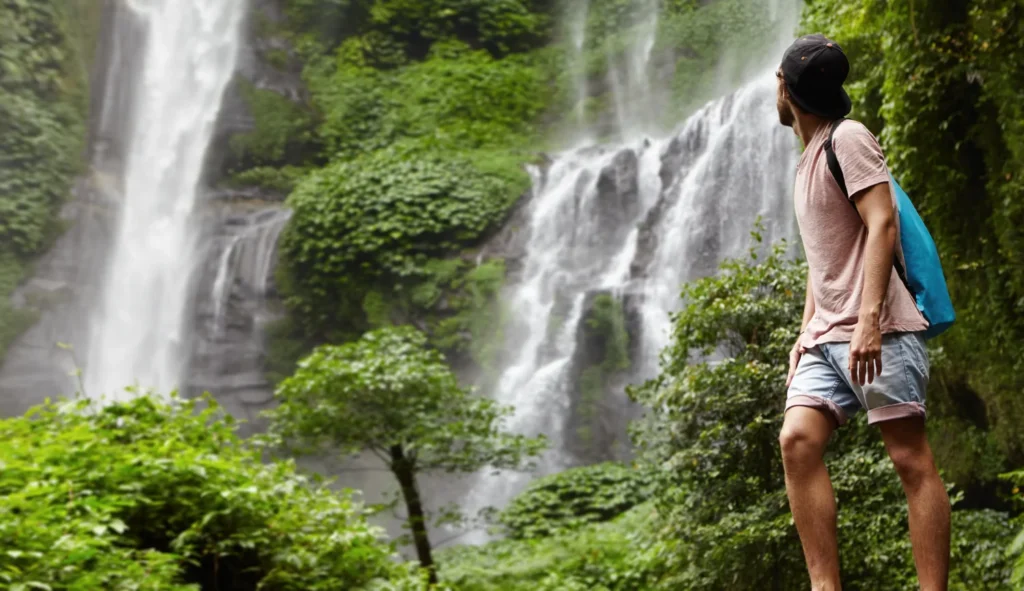Traveling between two hill regions often feels like flipping through pages of a peaceful, green story. The air shifts, the landscape changes shape, and your thoughts slow down without you even trying. The Coorg to Chikmagalur distance may be just five to six hours by road, but the journey feels richer when you don’t hurry. Coorg carries a warm, grounded charm, while Chikmagalur opens up into broader horizons and quieter trails. Moving from one to the other feels natural, almost like letting one mood gently fade into the next.
In the sections that follow, we’ll look at what each place offers, what to see along the road, and a few simple ways to make the trip feel more meaningful.
Coorg: Where Mornings Arrive Softly
If Coorg had a fragrance, I think it would be a faint mix of coffee flowers and damp earth after rain. The mornings feel almost unhurried, like the hills are stretching awake. The local Kodava culture influences everything from architecture to the way hospitality is offered. It feels personal, but not in a showy way.
Most visitors start in Madikeri. You can walk up to Raja’s Seat for sunrise if you’re an early riser. The light gently rolls across the valleys. Abbey Falls is close enough for a quick trip, though it’s much nicer right after monsoon when the water is fuller. Madikeri Fort is interesting if you like places that hold quiet stories rather than dramatic historical events.
If there’s one thing I’d suggest, it’s joining a coffee estate tour. It’s surprisingly grounding to see how something as everyday as a cup of coffee passes through so many hands and steps before reaching your table. Coorg also has the Namdroling Monastery in Bylakuppe, where chanting fills the halls in a calming rhythm. Spend a little time just sitting there. No photos needed. Just being.
By the way, if someone ever tells you there’s only one “best” view of Coorg, don’t believe them. Views here shift with the weather, time, and your own pace.
The Road from Coorg to Chikmagalur
At some point, the journey calls you onward. Most people follow the route via Hassan. It’s straightforward, though scenery changes quietly along the way. The Coorg to Chikmagalur distance isn’t long in terms of pure kilometers, but the road encourages a slower kind of travel. That’s part of the charm.
A few casual suggestions if you’re driving:
- Start early in the day when traffic is light and the air is cooler.
- Save a downloaded map because certain stretches fade in and out of network coverage.
- Take small breaks, not just for fuel or snacks, but simply to step outside and breathe.
As you travel, the scenery shifts between estates, small towns, and open fields. If you happen to reverse the journey one day, the Chikmagalur to Coorg route feels familiar but still fresh because the hills look different depending on the direction you approach them.
Chikmagalur: Wide Horizons and Quiet Trails
Chikmagalur feels more open, like the landscape lifts itself upward. It’s often mentioned as the birthplace of coffee in India. The hills around it, part of the Western Ghats, create long ridges where mist hangs low in the mornings. It’s the kind of place where you naturally slow your steps and your thoughts.
If you enjoy gentle trekking, consider Mullayanagiri, the highest peak in Karnataka. It’s not a difficult walk if the weather behaves, and the view at sunrise is worth the early alarm. Nearby Baba Budangiri has an interesting story woven into how coffee arrived in India, plus some caves that people like to visit. Hirekolale Lake is lovely near sunset, when the sky softens and the water turns still.
Staying in estate homestays is quite common here. They tend to be quieter than hotels and make it easier to rest. It’s the kind of place where reading a book in the afternoon actually feels luxurious.
Travelers who plan longer routes sometimes also discuss connections like Chikmagalur to Mysore or even Chikmagalur to Coorg again if they circle back. And occasionally, someone planning a pilgrimage trip will mention the Chikmagalur to Dharmasthala distance as they add Dharma-shala visits into the same journey. So the region connects easily to multiple travel styles.
Coffee Culture, Shared but Unique
Both Coorg and Chikmagalur have long histories with coffee. The cultivation styles, altitudes, and shade conditions differ, which means the flavor profiles differ, too. You’ll notice it more if you taste slowly instead of just drinking. A plantation walk in each region can make you appreciate your morning brew in a far deeper way.
When to Travel
- After the monsoon, from about September to early winter, the landscapes stay lush and the weather is comfortably cool.
- Summer is still pleasant, especially in the upper hills, though mid-afternoons can feel warm.
- Monsoon itself is beautiful, but roads can be slippery, and outdoor plans sometimes change quickly.
For photography, misty mornings are unpredictable but magical when they happen.
A Few Helpful Travel Tips
- Comfortable walking shoes make a noticeable difference.
- Pack a light sweater because evenings can surprise you.
- Ask locals about food recommendations instead of relying only on online lists.
- Try local Kodava cuisine in Coorg and Malnad-style meals in Chikmagalur. The flavors feel rooted in the land.
And if your journey extends further, the Chikmagalur to Mysore route or even looking up the Chikmagalur to Dharmasthala distance can help when planning day trips. Meanwhile, anyone returning the opposite way will naturally talk about Chikmagalur to Coorg travel notes they picked up along the way.
Conclusion
Traveling this route is less about checking places off a list and more about how the journey feels. The Coorg to Chikmagalur distance might sound straightforward on a map, but the real richness lies in the quiet mornings, the coffee plantations, the gentle hills, and the ease of time slowing down. Whether you are planning to return the Chikmagalur to Coorg Way or move onward to towns like Chikmagalur to Mysore or even check the Chikmagalur to Dharmasthala distance for your next leg, the memories tend to stay soft and steady. These are places that encourage you to breathe a little deeper and move a little slower.











